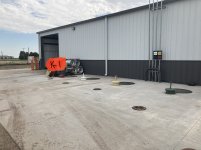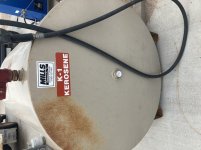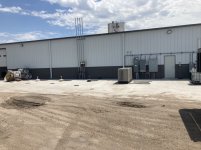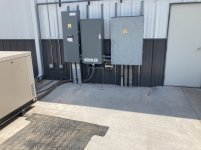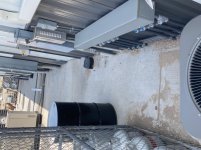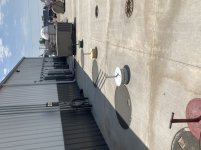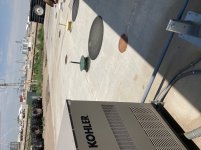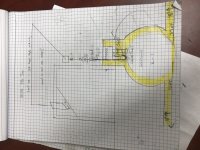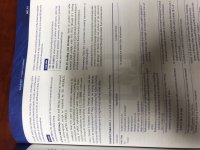ctaylo360860
Senior Member
- Location
- colorado
- Occupation
- ME
Kerosene pump is getting moved to location in first picture.
As I understand kerosene has a flashpoint of 100 degrees ferinheight. bcause it is not below 100, this is considered a classified location?
514.3(A) Unclassified Locations.
Where the authority having jurisdiction can satisfactorily determine that flammable liquids having a flash point below 38°C (100°F), such as gasoline, will not be handled, such location shall not be required to be classified.
The thing that caught my eye is that the service entrance conductors coming from poco transformer to Service disconnect cross right under a class 1 location. There are no seal offs and the race way is all in PVC. if im not mistaken i believe this is a violation of 514.8? I will add a third picture soon.
If the underground portion of the raceway passes below any class I location it still needs a seal off within 10 feet of emergence above grade. 514.8
As I understand kerosene has a flashpoint of 100 degrees ferinheight. bcause it is not below 100, this is considered a classified location?
514.3(A) Unclassified Locations.
Where the authority having jurisdiction can satisfactorily determine that flammable liquids having a flash point below 38°C (100°F), such as gasoline, will not be handled, such location shall not be required to be classified.
The thing that caught my eye is that the service entrance conductors coming from poco transformer to Service disconnect cross right under a class 1 location. There are no seal offs and the race way is all in PVC. if im not mistaken i believe this is a violation of 514.8? I will add a third picture soon.
If the underground portion of the raceway passes below any class I location it still needs a seal off within 10 feet of emergence above grade. 514.8
Attachments
Last edited:

